The first time I came to Yasodhara Ashram was in 1977, for a course called Women and Spiritual Life.
In the workshop we were asked questions like, What does it mean to be a woman? What is the purpose of your life? We wrote down our thoughts and then we read our papers together. All the women spoke about their spirits and used words that were strange to me.
At that time of my life, I saw myself as a mother, a wife, a sister, a daughter, a teacher. I had a list. The teachers asked me, “Is there anything more?” And I thought, no, not really. I saw myself as the dismissible, the invisible.
Every night I went to satsang and sat in the simple gathering chanting mantra. One night, I somehow felt I was being lifted up—or part of me was lifting up and part of me was staying there. It was as if I was stretching into Light. I didn’t know what to do with that experience at the time, so I just put it away. But it was the beginning. I felt that maybe yoga was a way of finding out the kernel of truth about my life.
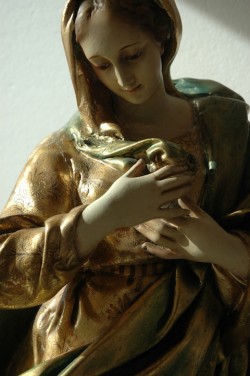 When I was growing up in the 1950s, in small-town British Columbia, all the women worked inside the home cooking, washing, cleaning, having babies. At that time there were very few opportunities for women—you could be a housewife, a nurse, a secretary or a teacher.
When I was growing up in the 1950s, in small-town British Columbia, all the women worked inside the home cooking, washing, cleaning, having babies. At that time there were very few opportunities for women—you could be a housewife, a nurse, a secretary or a teacher.
Women weren’t ministers, doctors or professionals. All the books were still using “he” and “him.” So who were you then as a woman? I left home to go to university in Vancouver and become a teacher.
I met different people, living different lifestyles, and I eventually found women who were interested in women’s issues, who actually talked about what it was to be a woman. We were just beginning to find a language to talk about ourselves and explore womanhood.
When I finally came to the ashram in my late thirties, I found a woman who was a spiritual teacher! There were spiritual images of such women as Mary and Tara, and prayers to Divine Mother—it was really the first time I saw respect for the divine feminine.
Swami Radha described Divine Mother as beautiful, powerful and creative. She told a story about how Divine Mother cried tears over her people, over how they harmed themselves through their jealousy, greediness, self-justification. Each teardrop became the creation of a devotee willing to do her work, to be a handmaiden of Divine Mother.
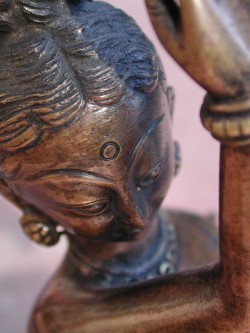 Devotion, softness and compassion seemed so lacking in the competitive, aggressive world I knew. I was used to being influenced by an outside force that was male or male-dominated. To find a place that was safe and encouraged a different way was mind-expanding.
Devotion, softness and compassion seemed so lacking in the competitive, aggressive world I knew. I was used to being influenced by an outside force that was male or male-dominated. To find a place that was safe and encouraged a different way was mind-expanding.
I realized that I was devotional and enjoyed connecting to Divine Mother, who at first, for me, was an image of Tara, the goddess of compassion. And I could connect with this aspect of compassion in Swami Radha. Her words were direct and full of power. She allowed me to see my illusions and also encouraged my potential.
For people on any spiritual path, what I see as the hardest part is making their spiritual life part of their daily life. They aren’t separate from each other. The two need to come together, and it’s a gradual shift.
I remember when I was just learning about yoga and ashrams, I heard Swami Radha give a talk and she said, “Do the Divine Light Invocation (a standing meditation on Light) once a day and see what happens in your life.” She wasn’t promising an explosion of Light! She was saying, “Wait and see, if you actually do this practice once a day, it will change your life.”
So I decided to try it, and I did begin to change. I felt more alive, for one thing. I was just coming out of my marriage, looking for new work, and I was stuck. What was life about? There had to be something more to it. I could read a lot of books, do a lot of things, have a lot of friends. But I wondered, How do I get to know people more? How do I make real connections?
Coming to the ashram and doing workshops opened things up for me. I got to know myself on a very intimate level. I could move away from being attached to my husband and others. I could take the steps to become more independent.
I kept coming back to learn more.
The ashram is a place where you can fill up. You can fill up spiritually. I think that the Kundalini system can tell us all about what an ashram is. You ask yourself, “Why am I here?” Then you can imagine how you want to be. You can use your passion to get there. You can open your heart and look at the things that need to be burned up. You can learn how to listen. Finally, you can learn how to use your intuition—I think that intuition is the gift of the Divine. You have to ask for it. And then you have to do the work.
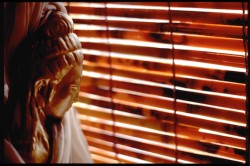 When I finally moved to the ashram in 1990, I remember Swami Radha asking me, “Why did you come?” I said it was because of Divine Mother. She replied, “Oh yes, it’s because it’s better for you to be with people of like mind and to be close to Divine Mother. You need to be here.” Yet, when I first started out on this path, I never had any inkling that I would live at an ashram in order to have a place for my devotion.
When I finally moved to the ashram in 1990, I remember Swami Radha asking me, “Why did you come?” I said it was because of Divine Mother. She replied, “Oh yes, it’s because it’s better for you to be with people of like mind and to be close to Divine Mother. You need to be here.” Yet, when I first started out on this path, I never had any inkling that I would live at an ashram in order to have a place for my devotion.
I remember the first time Swami Radha asked me to come over to her house and look after the many goddess statues. It was such a privilege! As I dusted and rearranged them, fixed them up and put flowers beside them, they all started to come to life. They really came to life! It was an incredible experience. I wouldn’t have missed it for anything.
![]() I did the same with my own statue of Tara. At the end of each day, I went to visit with her, and that became a big part of my practice. Tara seemed very real to me at that point. I had physical responses to her—although she was not there physically, she was very much there on another level. Sometimes I felt as if she was holding me, or that she was beside me, or that she was saying things to me.
I did the same with my own statue of Tara. At the end of each day, I went to visit with her, and that became a big part of my practice. Tara seemed very real to me at that point. I had physical responses to her—although she was not there physically, she was very much there on another level. Sometimes I felt as if she was holding me, or that she was beside me, or that she was saying things to me.
I took steps to get to know her, and as I got to know her; I got to know myself too. My self-image started to change. I was making a real connection to Divine Mother, and I was also making a connection to Swami Radha—a person who could challenge me and was a bit scary to approach—but in whom I could see the qualities of Divine Mother, of Radha, of that awesomeness of the Divine and also that gentleness.
I’m sure I projected a lot onto Swami Radha, but I think I was also pretty clear about who she was. I was able to build my own relationship with her and with Tara. Through those relationships, I felt my mind changing. I finally felt that being a woman was okay. I didn’t realize how the 1950s idea of “woman” had influenced me, because women were treated like objects, put away and possessed, limited.
When I think of it now, it seems like a weird foreign time when everyone smoked and wore crinolines! Those images had to be dissolved from my mind and it was important for me to instead see beautiful and powerful women. All of those old images started to change for me by learning that there was another feminine power available.
When I came to the ashram, I just had this feeling of “there’s something more.” And I think everybody feels that. I see when people come here, they say it: “There is something more.” And they mean in themselves, and in life. I’m often trying to understand, what is a spiritual person? For anybody, from the president of a country to the person working in a garage, you need to ask: How do I keep integrity, vision and purpose? What does it mean to be spiritual? Why would I want to be better than I am right now? Or, what would it mean: “better”?
It’s interesting to me that Swami Radha came to yoga later in her life, as did I. It shows me that at any point there is a different kind of life that can be lived. What she did between her forties and eighties was incredible. That kind of commitment to the Light lands on earth and it spreads to so many people. It’s inspiring.
That’s Divine Mother in action. I depend on Her. I depend on the inspiration of Her beauty here or anywhere, the Light and how things change and come dancing into being.
This is an excerpt from Carried by a Promise: A Life Transformed Through Yoga, by Swami Radhananda
Love elephant and want to go steady?
Sign up for our (curated) daily and weekly newsletters!
Editor: Travis May
Photo: Provided by the author



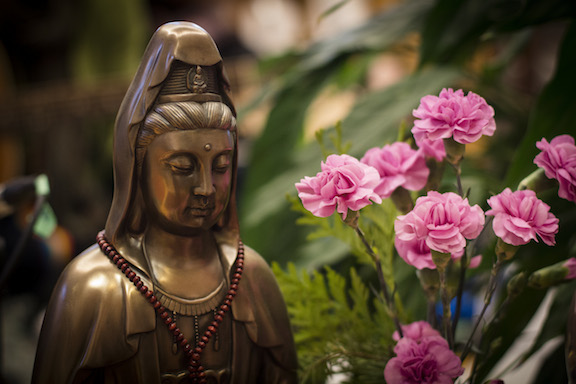
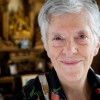



Read 0 comments and reply